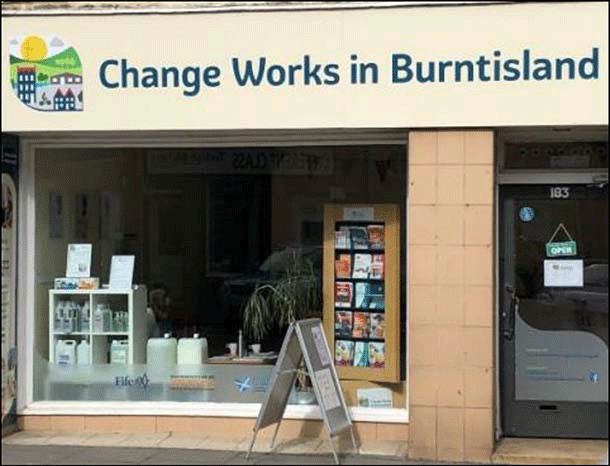Energy Efficient Scotland Transition Programme Survey Evaluation
This report presents the social evaluation of the Energy Efficient Scotland Transition Programme, which aimed to support local authorities’ engagement with households and businesses expected to self-fund energy efficiency improvements.
Introduction
Background to Energy Efficient Scotland programme
The Scottish Government has set legally-binding targets to achieve net-zero greenhouse gas emissions by 2045. Energy efficiency of buildings is a vital component of this transition, since buildings account for approximately 21 per cent of Scotland's total greenhouse gas emissions (Scottish Government, 2021). Accelerating the rate of energy efficiency retrofit and uptake of renewables in the 'self-funded'[1] domestic and non-domestic building sector is critical. As outlined in the Climate Change Plan (2018-2031) and Heat in Buildings Strategy (2021), the Scottish Government has committed to increase the energy performance of domestic buildings to at least Energy Performance Certificate (EPC) Band C by 2030, with all homes meeting at least this standard by 2033.
The Energy Efficient Scotland[2] programme aims to improve energy efficiency in all homes, business and public buildings. Energy Efficient Scotland was set up to test mechanisms for energy efficiency, and is now being taken forward through the Heat in Buildings Strategy. The programme is extending former legislation and support for energy efficiency, such as the Home Energy Efficiency Programme for Scotland: Area Based Scheme (HEEPS:ABS).
As part of the Energy Efficient Scotland programme, local authorities were invited to bid for three rounds of funding for pilots to support local energy efficiency and heat decarbonisation work. Pilots were conducted between 2016-2019: Phase 1 (2016-2017), Phase 2 (2017-2018) and the Transition Programme (2018-2019).
This report presents the social evaluation of the final phase of the pilot programme – the Transition Programme – that aimed to support local authorities' engagement with households and businesses expected to self-fund energy efficiency improvements.
Local authority pilots of engagement strategies
Engagement strategies were an opportunity for local authorities to pilot awareness raising and to support delivery of a 'hand-holding service' for improvement measures. Strategies targeted both domestic and non-domestic properties.
The engagement strategies included:
- Leaflet or letter i.e. postal (mail-out) or electronic (email);
- Dedicated telephone advice line;
- Energy drop-in centre (or 'hub')[3]; (example in Figure 1)
- Local event (e.g. talks and presentations to local community groups);
- In-home visit or site survey;
- Webpage;
- Other (e.g. local press, social media, referrals from friends or other organisations such as Home Energy Scotland).

Source: Changeworks (2020) Energy Efficient Scotland Transition Programme Pilot, Changeworks in Burntisland Final Report, p.1.
In most pilots, local authorities worked with a third sector organisation; these included the Wise Group, Changeworks, SCARF and the Energy Agency. This was at the discretion of local authorities, and they generally had an existing track record of work with such organisations.
Importantly, local authorities and their delivery partners designed their own engagement strategy and determined how they managed this. Each engagement strategy was therefore unique to the local authority and variable across Scotland, as shown in Table 1 (though there may be similarities between local authorities using the same delivery partner). All engagement strategies were used in combination; for example, some authorities that established a drop-in centre also used other methods of engagement, such as a letter and website. Therefore, the strategies were not conducted in isolation, and this is reflected on later in discussion of the research limitations.
Aim and structure of this report
The University of Edinburgh was commissioned to conduct the evaluation of the community engagement pilots during the Transition Programme. This evaluation report follows on from the social evaluations completed in Phase 1[4] and Phase 2[5] of the Energy Efficient Scotland pilots.
The research team, in collaboration with local authorities, conducted surveys in eight different local authorities. Surveys were used as the main method to investigate the effectiveness of different approaches to community engagement and advice services to increase uptake of energy efficiency measures by property owners.
The findings in this report will inform the development and delivery of the Scottish Government's on-going energy efficiency, fuel poverty, and heat decarbonisation programmes, including Warmer Homes Scotland and Home Energy Scotland.
The evaluation report is structured as follows: the first section provides a background introduction and context to the Energy Efficient Scotland Programme. The second section outlines the methods used for evaluating the pilots and notes the limitations of the research. The third section presents the results and discussion, and the final section presents the conclusion and key lessons for policy-making.
| Local Authority |
Delivery Partner |
Strategy |
Area |
|---|---|---|---|
| East Ayrshire Council |
Energy Agency |
Mail out; Social media; Events. |
Combined scheme in East Ayrshire & Dumfries & Galloway: Wallace Street & South Hamilton St in Kilmarnock (East Ayrs); Moffat Road & Edinburgh Road in Dumfries (Dumfries & Galloway) Dalrymple, Gatehead and Kilmarnock |
| South Ayrshire Council |
Energy Agency |
Mail out; Social media; Events. |
Alloway and Symington (towns) |
| Fife Council |
Changeworks |
Hub; Social media; Events. |
Burntisland (rural town) |
| The Highland Council |
None |
Mail out; In-home visits; Social media; Webpage; Email. |
Highland-wide and targeted action in HEEPS:ABS areas |
| Renfrewshire Council |
Wise Group |
Mail out; Social media targeting; Telephone advice line; In-home visits. |
Lochfield, Paisley |
| Aberdeen City Council |
SCARF |
Social media targeting; Mail out (email and webpage); Community events; Telephone advice line. |
Urban - Aberdeen |
| Aberdeenshire Council |
SCARF |
Hub; Mail out; Social media targeting; Email and webpage; Telephone advice line. |
Ellon (town, population ~ 10k) & district - Aberdeenshire |
| Scottish Borders Council |
Changeworks |
Hub; Social media targeting (email and webpage). |
Tweedale (population ~ 21k) – 5 towns |
Contact
Email: HeatInBuildings@gov.scot
There is a problem
Thanks for your feedback